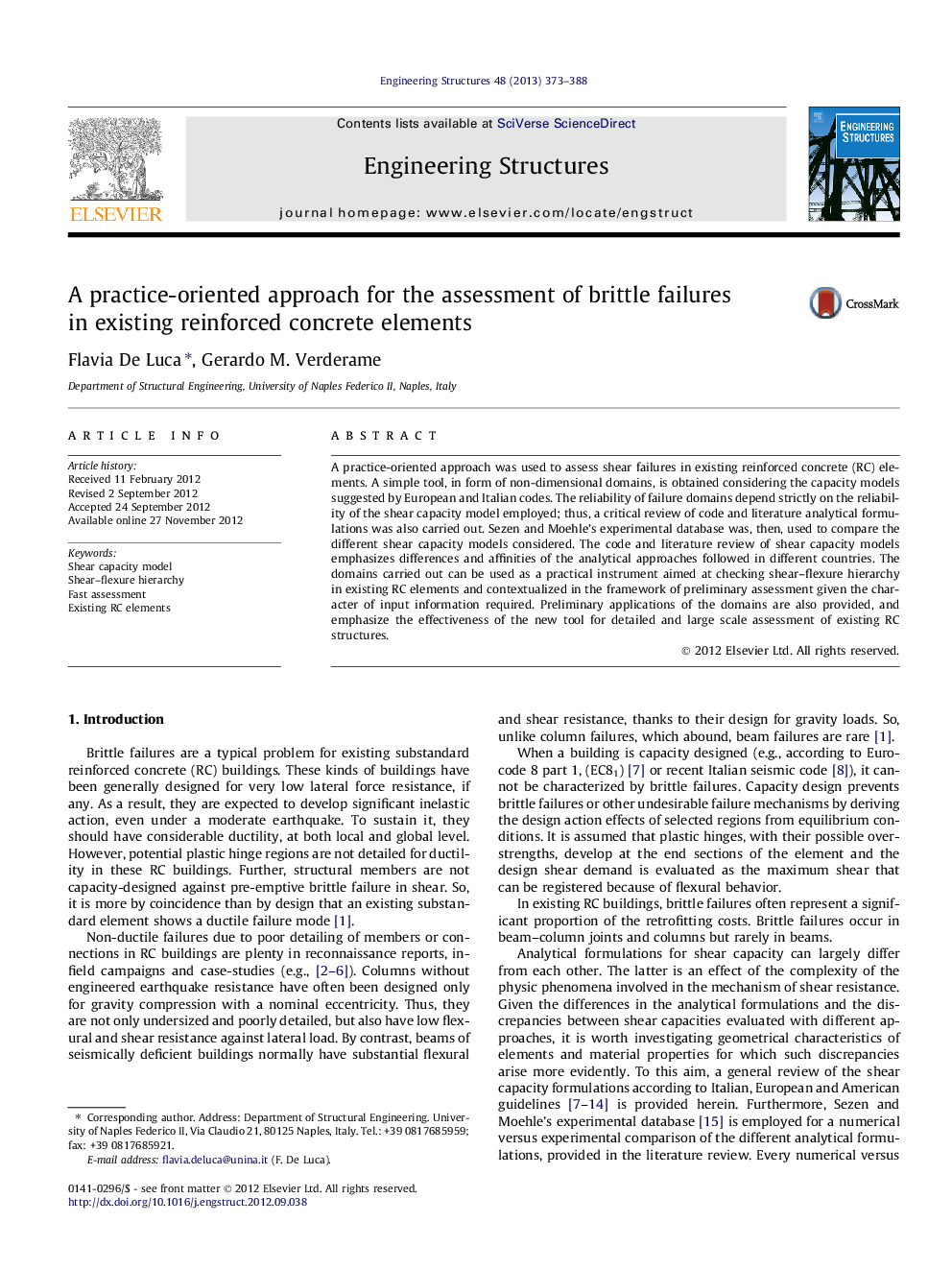| Article ID | Journal | Published Year | Pages | File Type |
|---|---|---|---|---|
| 267269 | Engineering Structures | 2013 | 16 Pages |
A practice-oriented approach was used to assess shear failures in existing reinforced concrete (RC) elements. A simple tool, in form of non-dimensional domains, is obtained considering the capacity models suggested by European and Italian codes. The reliability of failure domains depend strictly on the reliability of the shear capacity model employed; thus, a critical review of code and literature analytical formulations was also carried out. Sezen and Moehle’s experimental database was, then, used to compare the different shear capacity models considered. The code and literature review of shear capacity models emphasizes differences and affinities of the analytical approaches followed in different countries. The domains carried out can be used as a practical instrument aimed at checking shear–flexure hierarchy in existing RC elements and contextualized in the framework of preliminary assessment given the character of input information required. Preliminary applications of the domains are also provided, and emphasize the effectiveness of the new tool for detailed and large scale assessment of existing RC structures.
► Critical review of shear capacity models and comparison with experimental data. ► Comparison of Italian and European shear capacity models between each other. ► Domains for fast assessment of shear–flexure hierarchy in existing RC elements. ► Influence of design approach and material properties on fast assessment domains. ► Check of shear–flexure hierarchy on in-field data from the area near L’Aquila.
